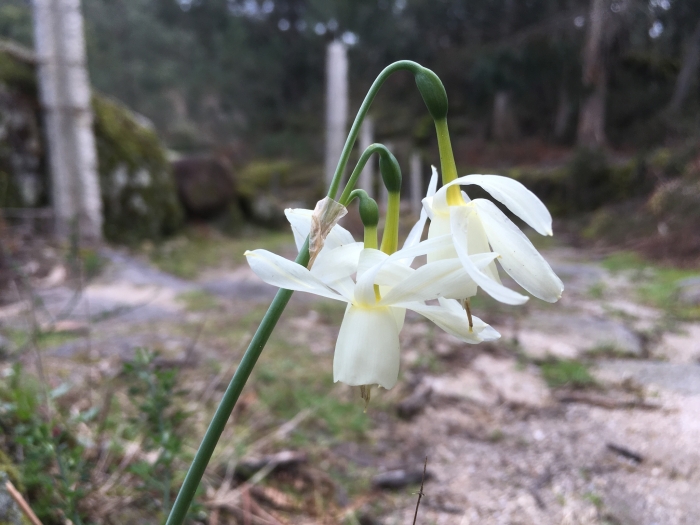Angel’s Tears
(Narcissus triandrus)
Angel’s Tears (Narcissus triandrus)
/
/

dschigel
CC BY 4.0
Image By:
dschigel
Recorded By:
Copyright:
CC BY 4.0
Copyright Notice:
Photo by: dschigel | License Type: CC BY 4.0 | License URL: http://creativecommons.org/licenses/by/4.0/ | Rights Holder: dschigel | Publisher: iNaturalist | Date Created: 2018-03-31T12:15:31Z |













































Estimated Native Range
Summary
Narcissus triandrus, commonly known as Angel’s Tears, is a deciduous perennial bulb native to the Iberian Peninsula and France, specifically thriving in open woodlands and meadows. It typically grows to a height and width of 0.5-1 feet (0.2-0.3 meters). Angel’s Tears is characterized by its delicate, nodding cream, yellow, and white flowers that appear in the spring, with each stem bearing two to three pendant, fragrant blooms. The flowers are showy, with reflexed petals and a long, narrow trumpet, giving the plant its angelic common name. The foliage consists of two to four broad, semi-cylindrical leaves that are similar to those of other daffodils.
Angel’s Tears is valued for its graceful flowers and ease of maintenance. It is often used in rock gardens, borders, and naturalized areas. The plant is also appreciated for its resistance to pests such as rabbits and deer, and its drought tolerance once established. In cultivation, it requires full sun to part shade, consistent moisture, and well-drained soils with a slightly acidic pH. It is recommended to plant the bulbs in late fall at a depth of two to three times their length to ensure adequate moisture retention and protection during winter. While it can tolerate light shade, the flowers prefer to orient towards the sun, making sunnier locations ideal for optimal blooming.CC BY-SA 4.0
Angel’s Tears is valued for its graceful flowers and ease of maintenance. It is often used in rock gardens, borders, and naturalized areas. The plant is also appreciated for its resistance to pests such as rabbits and deer, and its drought tolerance once established. In cultivation, it requires full sun to part shade, consistent moisture, and well-drained soils with a slightly acidic pH. It is recommended to plant the bulbs in late fall at a depth of two to three times their length to ensure adequate moisture retention and protection during winter. While it can tolerate light shade, the flowers prefer to orient towards the sun, making sunnier locations ideal for optimal blooming.CC BY-SA 4.0
Plant Description
- Plant Type: Bulb
- Height: 0.5-1 feet
- Width: 0.5-1 feet
- Growth Rate: Moderate
- Flower Color: Cream, White, Yellow
- Flowering Season: Spring
- Leaf Retention: Deciduous
Growth Requirements
- Sun: Full Sun, Part Shade
- Water: Medium
- Drainage: Medium
Common Uses
Bank Stabilization, Bee Garden, Border Plant, Butterfly Garden, Deer Resistant, Drought Tolerant, Fragrant, Low Maintenance, Potted Plant, Rabbit Resistant, Rock Garden, Salt Tolerant, Showy Flowers
Natural Habitat
Open woodlands and meadows in the Iberian Peninsula and France
Other Names
Common Names: Bulbocodium Daffodil, Daffodil, Änglatårar, Narciso
Scientific Names: , Narcissus triandrus, Queltia triandra, Ganymedes triandrus, Illus triandrus,
GBIF Accepted Name: Narcissus triandrus L.